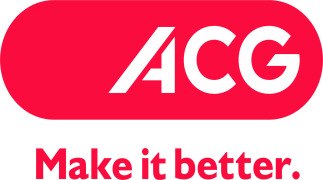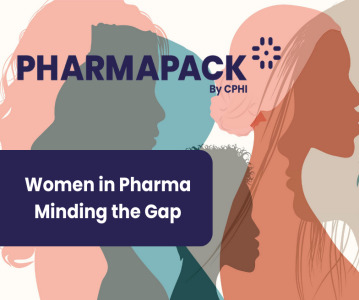How healthcare trends inform dosage forms
.png)
Capsules encompass one of the most popular solid oral dosage forms for pharmaceutical products, with the global empty capsule market predicted to rise to USD $3.7 billion by 2026. The growth in the capsule market can be partly attributed to the many options available for drugmakers regarding capsule material, sizes, colours, and printing options. With so many options available, formulators are spoilt for choice. However, selecting the correct capsule for specific product development can lead to challenges around drug complexity and stability.
Speakers Simon Roberts PhD – Scientific Business Development Manager Europe and Dr. Jnanadeva Bhat PhD Head – Formulation R&D (Pharma & Nutra) of ACG World shared some insight into current formulation trends, the benefits and challenges of capsule formulations, and key considerations when selecting the right capsule option for a product.
Pharmaceutical and Nutraceutical Global Trends Inform Dosage Forms
Roberts began the webinar with how current pharmaceutical and nutraceutical trends have been informing oral dosage forms, with patient/customer centricity, R&D innovations, and additive and continuous manufacturing making some of the greatest impacts. Given these trends, some of the major focus areas for the industry include ease of manufacturing, modified release, global regulatory requirements, and specialised applications. Armed with a solid history of capsule evolution and what the pharma industry is looking for in capsule formulations, Roberts presented the advantages of capsules as a dosage form, citing easy encapsulation, quicker development of a new product, and less additives than traditional tablets, among others. In comparison to other solid dosage forms, capsules also require less steps in the manufacturing process than tablets and can achieve a combination fill. Roberts emphasised the ease of development and scalability of capsules given their versatility in holding almost any pharmaceutical or nutraceutical active ingredient. Powders can be blended, and tastes and odours masked with additional ingredients, offering drugmakers a versatile drug formulation option and patients a product that best suits their individual needs.
Reiterating how global consumer healthcare trends regarding patient-centricity and manufacturing innovations are informing the capsule market, Roberts highlights the forecasted growth of the capsule market to reach USD $3.7 billion by 2026, with a 7.2% CAGR during the forecast period from 2021 to 2026. Given all that hard capsules have to offer and their predicted demand, what then are the criteria for selecting the right capsule for your drug formulation?
The Right Capsule for the Right Product
Bhat gave a comprehensive overview of criteria to consider when selecting the appropriate capsule for a product:
1. Shell barrier to gas and water: moisture sensitivity of the drug’s formulation to both environmental humidity and humidity inside the formulation itself will affect the type of capsule used for a particular formulation. The Oxygen Transmission Rate (OTR) and Water Vapour Transmission Rate (WVTR)
2. Reactivity of material filled: excipients will inevitably be utilised along with the API or ANI to improve the mode of administration, solubility, or even the density of the active ingredient. However, capsules may present incompatibility issues when considering their use for a particular drug formulation. Capsule fillings are generally unfavourable for use with reactive aldehydes due to cross-linking. In a similar vein, drug formulations which use anionic and/or cationic polymeric excipients will determine the type of animal gelatine capsule used because of different reactivity between the materials.
3. Material composition and other parameters: Bhat also focused on the physical composition of the capsule itself. For some capsules, the material composition may be hygroscopic while others could cause a Maillard reaction upon contact with primary amides. Physical reactions will generate their own set of challenges that determine the type of capsule used.
Encapsulating pharmaceutical and nutraceutical capsule challenges
Bhat also gave a quick overview of various challenges faced by the pharma industry in regard to capsule formulations. Physio-chemical interactions, cracking of capsules, discoloration, colour interaction, and shell-fill were all cited as specific challenges for capsule manufacturing. Bhat presented several case studies related to these challenges.
For example, dosage forms for the antifungal drug Itraconazole were developed and marketed as gelatin capsules but faced difficulties regarding dissolution. Hydroxypropyl methylcellulose (HPMC) capsules were tested and demonstrated that drug release was higher in comparison to gelatin capsules, and pellets did not remain entrapped in the capsules during dissolution.
Bhat emphasised how such challenges in meeting global healthcare trends with capsule technology could provide ample opportunity for innovation in capsule formulation and modifications, as well as manufacturing practices and procedures.
The nutraceutical industry is not immune to such challenges either, as Roberts presented on challenges faced by the nutraceutical industry. In a similar vein to the pharma industry, common challenges for inserting nutraceutical ingredients into capsules include formulation compatibility, moisture sensitivity, product stability, and animal origin products, among others. Again, case studies were presented to demonstrate how capsule modifications could meet the specific requirements (such as opting for non-animal origin capsules) for nutraceutical products. With healthcare trends looking towards meeting customer choices and lifestyles, capsule development and manufacturing has steadily been moving toward vegetarian or vegan capsule options. Consumer taste and product appeal, Roberts stated, have also informed the continuous development of nutraceutical and supplement capsule technologies to accommodate for stomach sensitivities, olfactory responses, and other sensitivities.
Capsule Questions: what’s left for capsule technology?
Some of the big questions remaining for the Roberts and Bhat concerned regulations around innovative capsule technology for patient centricity. While Roberts stated there could be some challenges regarding colour additives, however many capsule criteria are already regulated and accepted worldwide. With the market growth for solid dosage forms and in particular capsules increasing at the rate that it is, Roberts and Bhat both emphasised how capsule development and manufacturing must account for consumer healthcare interest and trends.
Watch the full webinar on-demand here.
The insight you need at CPHI Barcelona
Making the right decisions – from long-term strategy to manufacturing detail – is critical to the success of your business. Informing those decisions is what we do at CPHI Barcelona. Meet and hear from industry experts who know exactly what you're dealing with.
Your CPHI Barcelona pass gives you access to all conference sessions, including Formulating the Future, as well as the chance to connect in-person with the global pharma supply chain from 24-26 October, at Fira Barcelona Gran Via. Browse the agenda and secure your pass today!
Related News
-
News Pharmapack Awards 2024 Patient-Centric Design Award Winner – Dr Ferrer BioPharma
The 2024 Pharmapack Awards celebrated the best in innovation and design for the pharmaceutical packaging and drug delivery industry on January 24, 2024. -
News Women in Pharma: Minding the Gap at Pharmapack 2024
2024 marks the first year Pharmapack will host a Diversity track dedicated to bridging the gap within the pharmaceutical packaging and drug delivery sector. The track includes a panel discussion on 'Enabling Diversity in the Workplace,' focused... -
News Pharmapack Awards 2024 - Celebrating Packaging and Drug Delivery Innovation
The 2024 Pharmapack Innovation Awards ceremony celebrated the best in pharmaceutical packaging and drug delivery innovation at all levels. The awards were held on January 24, 2024 at the Paris Expo Porte de Versailles. -
News 2024 Pharma Industry Trends Outlook: Collaboration, Market Maturity, and Digital Futures
The annual CPHI Online 2024 Pharma Trends Outlook, in partnership with Arvato Systems, identifies 12 key industry trends shaping the life sciences industry in the coming year. -
News New Novo Nordisk AI hub for drug discovery to open in London, UK
Danish pharmaceutical giant Novo Nordisk will be opening an AI-based research facility in the heart of London to advance drug discovery operations. -
News BioNTech to begin mRNA vaccine manufacturing in Rwanda by 2025
German biotechnology company BioNTech has stated their intentions to begin production at their mRNA vaccine factory in Rwanda by 2025, which will mark the first foreign mRNA vaccine manufacturing site on the continent of Africa. -
News Women in Pharma: Looking back on 2023 and moving forward to 2024
In this monthly series, we interview women from across the pharmaceutical industry and supply chain to discuss the importance of gender diversity in healthcare, the workplace, and beyond. -
News CPHI Barcelona 2023: Partnering for Success – Managing Outsourcing Relationships to Optimise Manufacturing Operations
During CPHI Barcelona 2023, insightful content sessions offered attendees the chance to explore trending topics with expert speakers and panellists. Here, we summarise what the pharma industry and supply chain are talking about the most.
Position your company at the heart of the global Pharma industry with a CPHI Online membership
-
Your products and solutions visible to thousands of visitors within the largest Pharma marketplace
-
Generate high-quality, engaged leads for your business, all year round
-
Promote your business as the industry’s thought-leader by hosting your reports, brochures and videos within your profile
-
Your company’s profile boosted at all participating CPHI events
-
An easy-to-use platform with a detailed dashboard showing your leads and performance








